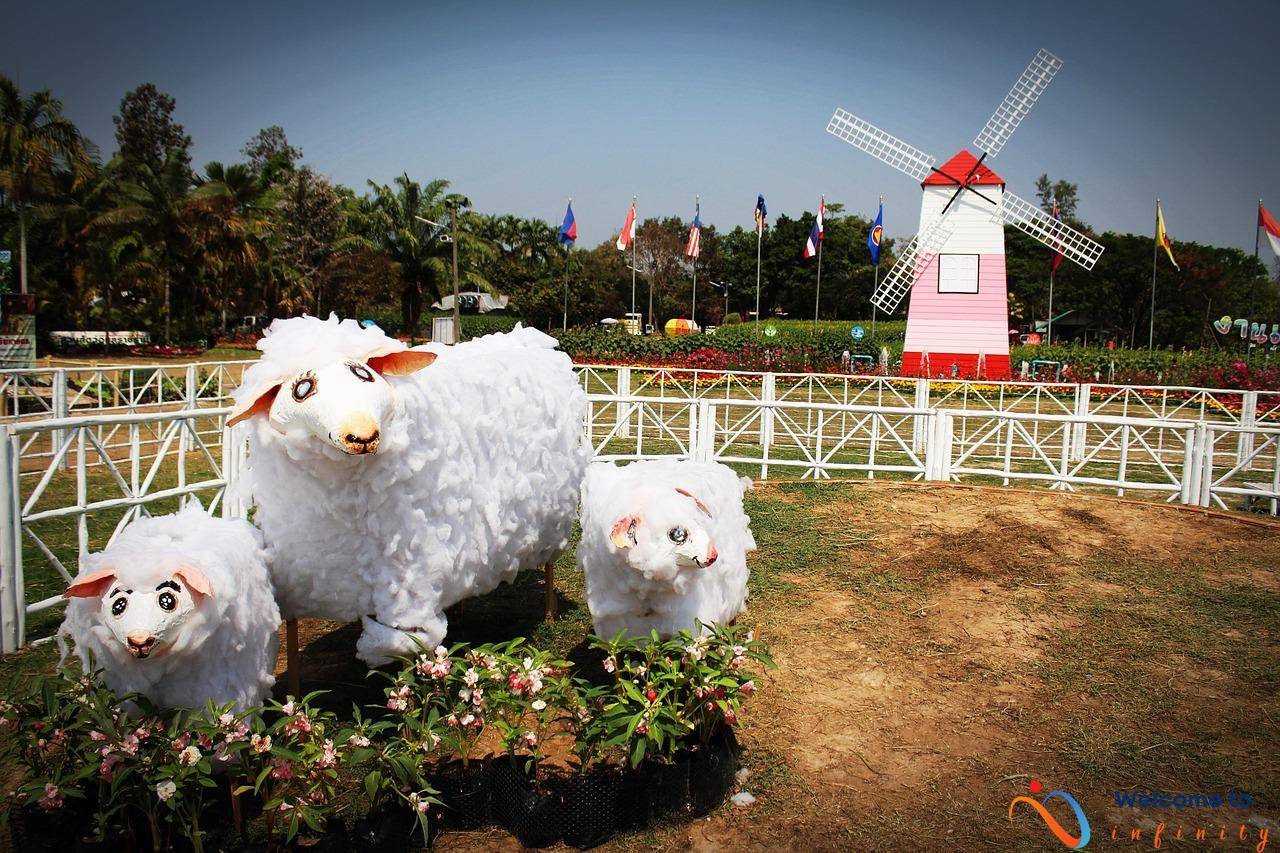Traditional cultural clothing has always played a role in inspiring modern fashion. From the bright hues of African fabrics to the intricate embroidery of traditional Indian clothing, designers are taking inspiration from cultures around the world to infuse their creations with a unique style.
The power of traditional costumes lies in their ability to tell a story. The designs, colors, and patterns of traditional clothing are often tied to a specific region or community, and wearing them represents a connection to that cultural heritage. Throughout history, traditional clothing has influenced fashion – from the decadent ballgowns of the Victorian era to the bohemian-inspired fashions of the 1960s.
Now, in an age where many cultures are melting together, traditional clothing is making a comeback in modern fashion. People are recognizing the importance of preserving cultural heritage and are engaging with traditional clothing as a way to reclaim their cultural identity.
- Identity and Representation
Traditional cultural clothing plays a crucial role in representing a person's identity. It can represent a tribe, religion, or region, and wearing it shows a connection to one's cultural heritage. For many people, traditional clothing is part of their identity, and wearing it can bring a sense of pride and connection to their community.
- Reclaiming Cultural Identity
- Misappropriation vs. Appreciation
For some, engaging with traditional clothing is a way to reclaim cultural identity that was lost due to colonization or globalization. However, there is a fine line between cultural appreciation and cultural appropriation in fashion. When designers take traditional designs without giving credit or understanding their cultural significance, it can be offensive to the communities that hold those designs dear.
- Cultural Clothing in High Fashion
Traditional cultural clothing has also made an appearance on high fashion runways. Designers are taking inspiration from traditional clothing and blending it with contemporary styles to create unique ensembles. From the colorful Ankara prints seen in contemporary fashion to the delicate beadwork in haute couture, traditional clothing is becoming a staple on the runway.
Ultimately, embracing cultural traditions in fashion can promote diversity and understanding. By recognizing the importance of traditional cultural clothing, designers can help preserve dying cultures and celebrate the rich diversity of our world.
The Power of Traditional Costumes
Traditional costumes have played a significant role in shaping fashion throughout history. Many traditional costumes are rooted in cultural significance and have unique designs that are passed down from generation to generation. As technology advanced and the world became more connected, traditional costumes began to influence fashion in new ways.
The incorporation of traditional costumes into modern fashion can be seen in various aspects of clothing design, such as prints, embroidery, and silhouette. Designers are also taking inspiration from traditional costumes for their seasonal collections, giving these costumes a platform in the fashion world like never before.
Incorporating traditional costumes into fashion not only celebrates the cultural heritage of a region but also brings attention to the unique beauty of different traditional costumes. Fashion has the power to create awareness and bring cultures together by promoting diversity, and traditional costumes are a perfect example of this.
Moreover, traditional costumes have also influenced fashion by inspiring designers to incorporate new elements and designs. Many fashion trends have emerged from traditional costumes, such as the boho-chic trend inspired by traditional Indian clothing, or the kimono-inspired robes that are popular in many fashion collections.
Overall, traditional costumes hold tremendous power when it comes to inspiring fashion trends. By incorporating traditional costumes into modern fashion, designers are not only paying homage to traditional clothing but also promoting cultural diversity. As fashion continues to evolve, traditional costumes will undoubtedly continue to inspire new trends and designs.
Resurgence of Cultural Dress
In recent years, traditional cultural clothing has made a big comeback in modern fashion. From the vibrant prints of African wax prints to the intricate embroidery of Pakistani shalwar kameez, designers are drawing inspiration from traditional textiles and designs to create unique ensembles.
So why the resurgence of cultural dress in the fashion world? For one, traditional clothing allows people to showcase their cultural heritage and identity in a world that can often feel homogenized. Through fashion, people can express their individuality and be proud of their roots.
Additonally, there is a shift towards sustainable and ethical fashion, and traditional clothing is often made by hand using local materials and techniques, making it a more eco-friendly and ethical choice for consumers. This has led to an increase in demand for traditional clothing from both designers and consumers alike.
Moreover, fashion designers are increasingly recognizing the beauty and uniqueness of traditional clothing. They are embracing cultural traditions and textures, and infusing them with modern aesthetics to create something new and exciting. By doing so, they are promoting the diversity of fashion and cultural heritage, breaking down barriers and encouraging cross-cultural understanding.
- Traditional clothing allows people to showcase their cultural heritage and identity.
- There is a shift towards sustainable and ethical fashion, making traditional clothing a more eco-friendly and ethical choice
- Fashion designers are embracing cultural traditions to promote diversity and understanding.
Overall, the resurgence of cultural dress in modern fashion is a positive development, both for the fashion industry and the preservation of cultural heritage. It celebrates diversity, promotes ethical and sustainable fashion choices, and helps keep traditional clothing and craftsmanship alive for future generations to enjoy.
Identity and Representation
Traditional cultural clothing has played an important role in representing a person's identity and cultural heritage throughout history. It is a way for individuals to showcase their ancestral roots and cultural traditions to the world. Many people feel a strong connection to their cultural clothing and find it as a way to express their identity.
Traditional costumes are often heavily influenced by the geographical region, the climate, societal class, customs, and beliefs. For instance, Japanese kimonos have different patterns and colors depending on the occasion. Indian sarees have various styles, designs, and fabrics based on the state and community. African dashikis have unique patterns and motifs that represent different tribes and ethnicities.
Wearing traditional costumes can also be a way for individuals to feel a sense of belonging to their community or country. It can represent their affiliation with their cultural group and nationality. Wearing cultural clothing can also create a sense of unity and bond between individuals who share a similar cultural background. It can be a beautiful way to celebrate diversity and honor the differences between different countries and cultures.
Moreover, traditional cultural clothing allows individuals to visually represent their unique cultural heritage. It gives them a chance to educate others about their culture and inform them about the history, customs, and beliefs associated with it. In fact, many cultural institutions around the world have included traditional clothing as a part of their exhibitions and educational materials to promote cultural diversity and understanding.
Overall, traditional cultural clothing plays a crucial role in representing a person's identity and cultural heritage. It allows individuals to express their affiliation with cultural groups, show pride in their nationality, and educate others about their cultural traditions. By embracing cultural clothing, individuals can promote diversity, encourage cultural understanding, and revive the beauty of traditional clothing in the modern world.
Reclaiming Cultural Identity
In recent years, many people have been turning to traditional clothing as a way to reclaim their cultural identity. As globalization continues to bring the world closer together, many cultures are at risk of being erased or assimilated into more dominant cultures. This is where traditional clothing plays a vital role.
Traditional clothing is a tangible expression of a culture's history, beliefs, and values. It helps people stay connected to their roots, providing a sense of belonging and heritage. For many people, wearing traditional clothing is a way of asserting their cultural identity, particularly in the face of cultural erasure.
Furthermore, there is a growing trend towards sustainable and ethical fashion, which has led to increased interest in traditional clothing. By embracing cultural traditions, people are not only reconnecting with their cultural identity but also promoting the preservation of traditional clothing, which can often be eco-friendly and locally sourced.
It's not just individuals who are embracing traditional clothing to reclaim their cultural identity. Fashion brands and designers have also recognized the importance of traditional clothing and are incorporating it into their collections. This not only helps to keep traditional clothing relevant in modern times but also provides a platform to showcase and celebrate diverse cultures.
In conclusion, people are engaging with traditional clothing to reclaim their cultural identity because it serves as a tangible connection to their heritage. By embracing traditional clothing, individuals can not only assert their cultural identity but also promote the preservation of diverse cultural traditions.
Misappropriation vs. Appreciation
As fashion continues to embrace cultural traditions and incorporate them into modern trends, it's important to understand the difference between cultural appropriation and cultural appreciation in fashion. Cultural appreciation is when a cultural element is used respectfully and with the intention of embracing and celebrating another culture. This promotes cultural understanding and helps to break down cultural barriers. On the other hand, cultural appropriation involves taking elements of a culture without understanding or respecting its significance, history, or symbolism. This can be disrespectful to the culture and its people.
In fashion, cultural appropriation can occur when people wear traditional clothing or accessories without proper knowledge or understanding of their cultural significance. It's important to consider the context and history of these items before wearing them in a purely aesthetic way. However, cultural appreciation in fashion involves respectfully incorporating cultural elements into fashion designs while recognizing and honoring their cultural origins.
It's important to promote cultural diversity in fashion while also respecting and honoring the traditions and histories that inspire these designs. When done with respect and thoughtfulness, incorporating traditional elements from various cultures can promote a greater understanding and appreciation of diverse cultures around the world.
Cultural Clothing in High Fashion
One of the most significant ways that traditional cultural clothing has influenced modern fashion is through high fashion runways. Fashion designers have long been inspired by traditional cultural clothing and have used it to create unique ensembles that wow audiences on the runways. One example of this influence is the traditional Japanese garment, the kimono. Designers such as Alexander McQueen, Prada, and Louis Vuitton have used this iconic garment to inspire their collections.
Cultural clothing in high fashion not only promotes cultural diversity but also helps to keep traditional cultural clothing alive and relevant by showcasing it to a wider audience. Designers are utilizing the cultural heritage and history behind traditional clothing to create couture pieces that sell for thousands of dollars. Moreover, the fashion industry is now making a conscious effort to collaborate with traditional artisans and to promote their work.
The traditional Indian sari is another example of a garment that has influenced the high fashion industry. Fashion designers have taken elements of this traditional costume and incorporated them into modern designs, creating a fusion of traditional and contemporary clothing.
Indeed, embracing cultural traditions in fashion not only promotes cultural diversity and understanding but also creates an opportunity for fashion designers to look beyond their own cultures and gain inspiration from other traditions and heritages. By appreciating and respecting traditional cultural clothing, the fashion industry is taking a step towards preserving cultural diversity and history for future generations.
Modernizing Traditional Clothing
In recent years, there has been a growing trend of fashion designers modernizing traditional clothing. Through the infusion of modern aesthetics, traditional cultural clothing is being given new life and appeal. Designers are taking traditional clothing styles and incorporating contemporary design elements to create unique ensembles that are both modern and traditional.
One way that designers are modernizing traditional clothing is by incorporating unique materials such as leather, sequins, and lace. This blending of materials gives traditional clothing a modern twist, making it more appealing to a wider audience. Additionally, designers are incorporating bold prints and colors into traditional clothing to give it a fresh, modern look.
Another way that traditional clothing is being modernized is through the use of new silhouettes and cuts. Designers are creating modern interpretations of traditional clothing by incorporating new cuts and shapes, creating a fusion of traditional and contemporary styles. For example, a traditional long flowing skirt may be updated with a modern high waist and unique draping.
In addition to these design elements, designers are also incorporating modern accessories into traditional ensembles such as statement jewelry, belts, and shoes. These additions bring a modern edge to traditional cultural clothing, making it appealing to a wider audience.
By infusing traditional clothing with modern aesthetics, designers are creating fashion pieces that are both culturally significant and trendy. This trend is not only helping to preserve dying cultures, it is also promoting cultural diversity and understanding. Through the modernization of traditional clothing, designers are able to create fashion that appeals to modern audiences while celebrating cultural traditions.
Integrating Traditional Cloth with Contemporary Design
Fashion designers are known for their creative genius in blending different styles and materials to create something unique. This has led to the trend of integrating traditional cloth with modern designs to create unique ensembles that exude originality and cultural significance. By blending traditional cloth with modern aesthetics, fashion designers are introducing a new era of fashion that embraces cultural diversity and promotes cultural appreciation.
Designers are bringing back traditional cloth such as Kente, Ankara, and Adire by mixing them with modern designs. For instance, combining Adire with contemporary clothing such as denim, leather or silk to create a unique piece of clothing that tells a story. These designs do not only represent the traditions and values of the culture it emanates from but also showcase the designer's ability to fuse traditional elements into modern fashion.
Some designers have taken this blending a step further in creating a new form of traditional clothing which they refer to as Afrocentric fashion. Afrocentric fashion integrates traditional African fabrics with contemporary designs to produce garments that exude originality and cultural significance. This new trend allows African-Americans and people of African descent to reconnect with their roots while staying true to contemporary fashion.
The integration of traditional cloth with modern styles is not only reviving traditional forms of clothing but is also promoting cultural diversity in the fashion industry. Fashion designers are showcasing the uniqueness and richness of different cultures across the globe which is a beautiful thing. Additionally, this trend has also created an avenue for job creation in textile and fashion industries in Africa.
In conclusion, integrating traditional cloth with contemporary design is a prominent trend in modern fashion that represents the rich cultural heritage of different traditions. This trend is promoting cultural diversity in fashion, reviving dying cultures and showcasing the creativity of fashion designers.
Reviving Dying Cultures Through Fashion
Fashion designers are playing a crucial role in keeping traditional cultural clothing alive and reviving dying cultures. With globalization and modernization, traditional clothing and cultural practices are being forgotten. However, fashion designers have found a way to showcase traditional clothing by infusing modern aesthetics to make traditional clothing more appealing to younger generations.
Designers are taking time to research and understand cultural practices and using this knowledge to create contemporary designs that represent the essence of traditional clothing. They are bringing back fabrics, patterns, and embroidery, breathing new life into cultural clothing. Additionally, designers are working with local artisans and preserving traditional skills, which have been passed down through generations.
By including cultural clothing in fashion, designers are creating awareness of diverse cultural practices. People are now able to experience different cultures and appreciate their significance. They are also learning about cultures that could have been forgotten and inspiring individuals to take pride in their cultural heritage.
Designers are also using fashion shows to highlight traditional clothing, bringing attention to cultures that are on the verge of extinction. By incorporating traditional clothing into modern fashion, designers are reviving cultural clothing and encouraging others to embrace traditional clothing.
In conclusion, fashion designers are not only creating beautiful clothing items but also preserving cultural practices and reviving dying cultures. They are helping to create a deeper understanding of different cultures and promoting cultural diversity. Through fashion, they are keeping traditional clothing alive, which has a significant impact on cultural heritage. By infusing modern aesthetics with traditional clothing, fashion designers are creating unique fashion pieces that can be proudly worn by individuals from different cultural backgrounds.
Promoting Cultural Diversity through Fashion
Promoting cultural diversity through fashion is an essential aspect of appreciating and respecting different cultures. By embracing traditional cultural clothing in fashion, we can promote cultural diversity and understanding.
Wearing traditional costumes from different cultures not only adds uniqueness but also richness to fashion. It helps to break down stereotypes and promote cross-cultural communication. Fashion designers have the power to showcase different cultures' beauty and highlight their diversity.
Bringing different cultural traditions into fashion can help create a better understanding and appreciation of cultures. By seeing people of different ethnicities and cultural backgrounds wearing traditional clothing and accessories, we can get a better sense of what it means to be part of their culture. People can learn about different cultures' customs, beliefs, and ways of life, fostering mutual respect and appreciation.
With fashion being such a global industry, promoting cultural diversity is an essential step towards inclusivity. Designers can use their platforms to promote cultural exchange and showcase diversity. By bringing traditional cultural outfits onto the runway, designers are setting an example of the importance of embracing different customs and cultures.
In summary, embracing traditional cultural clothing in fashion can promote cultural diversity and understanding. It helps to break down stereotypes and promote cross-cultural communication. By bringing different cultural traditions into fashion, designers can promote inclusivity, diversity, and mutual respect.









